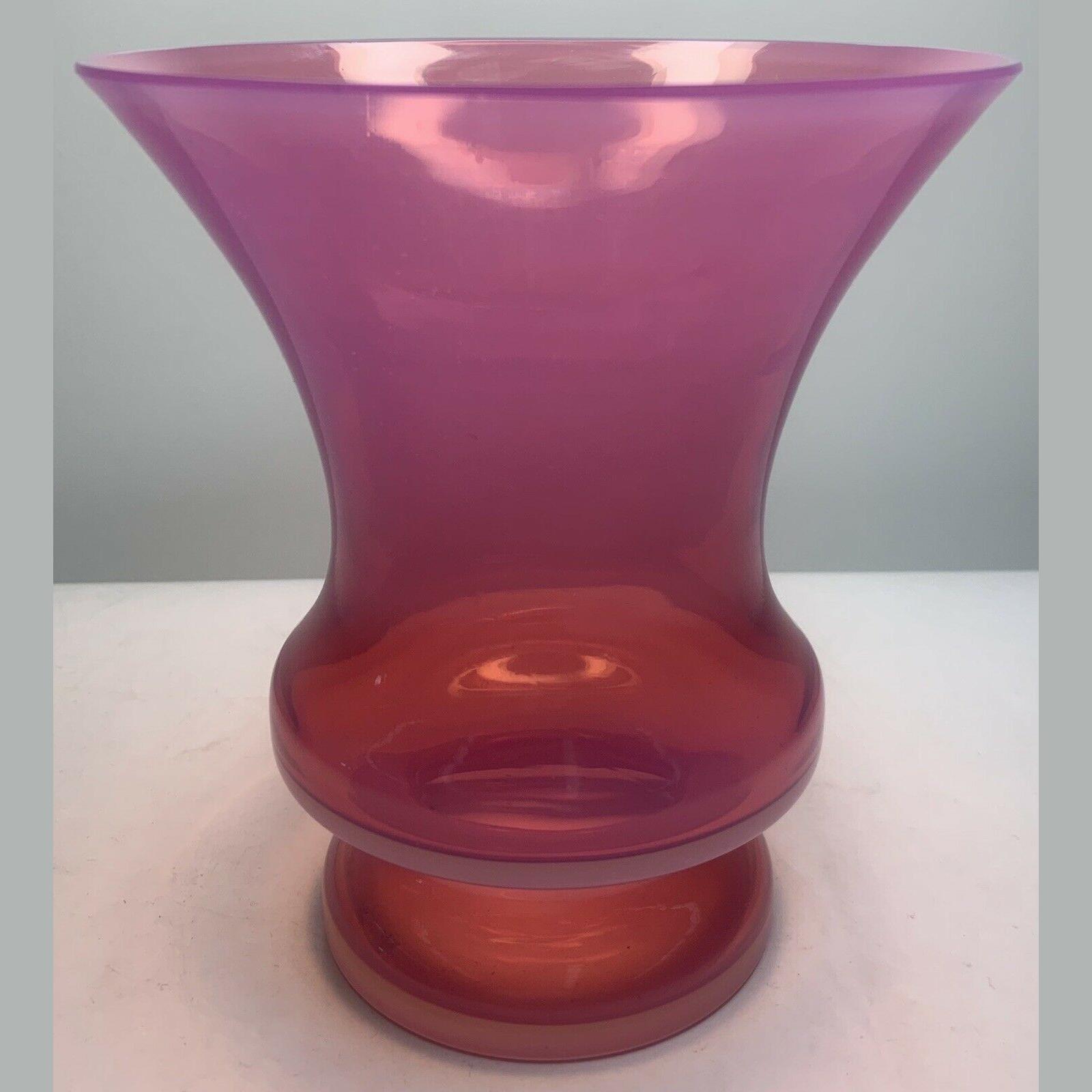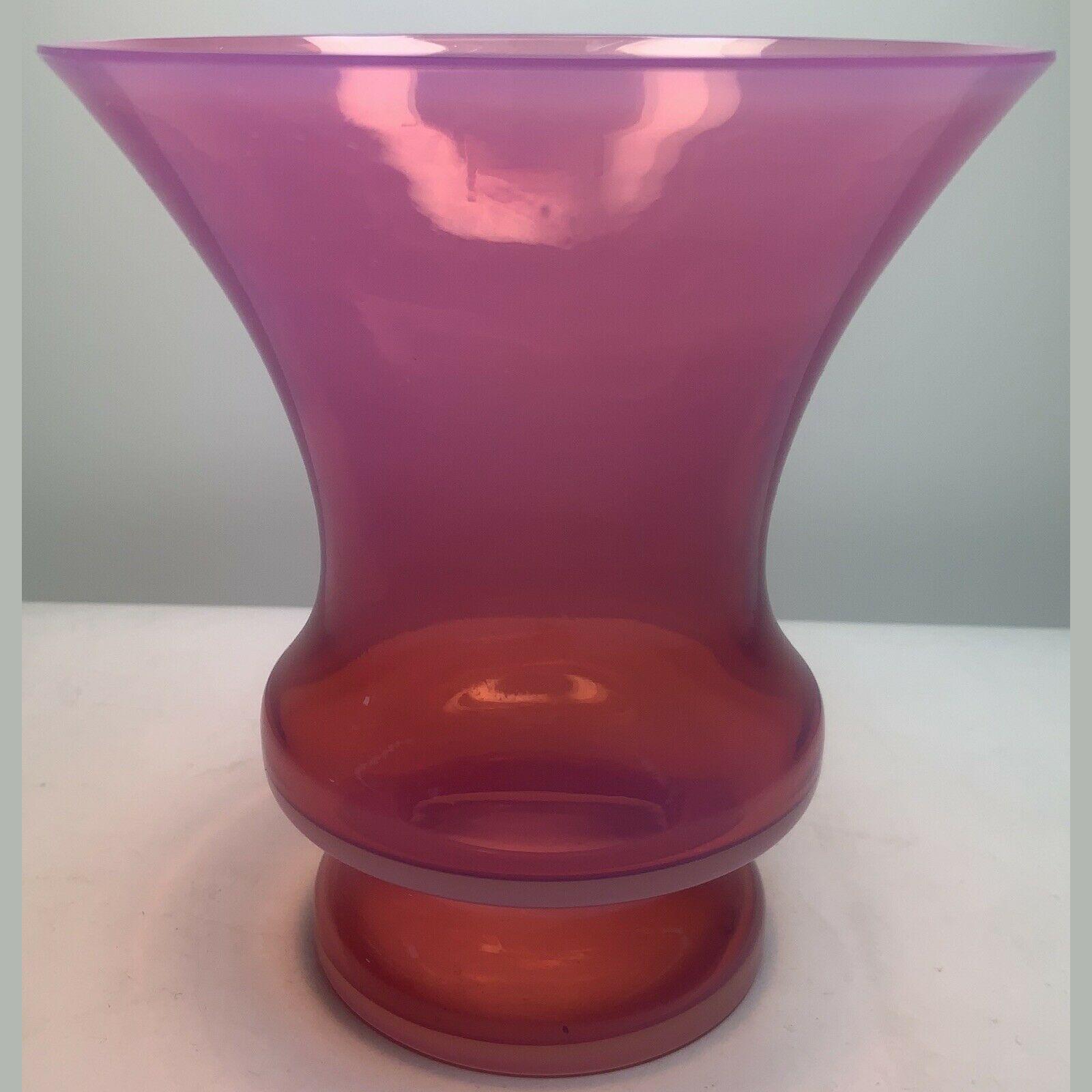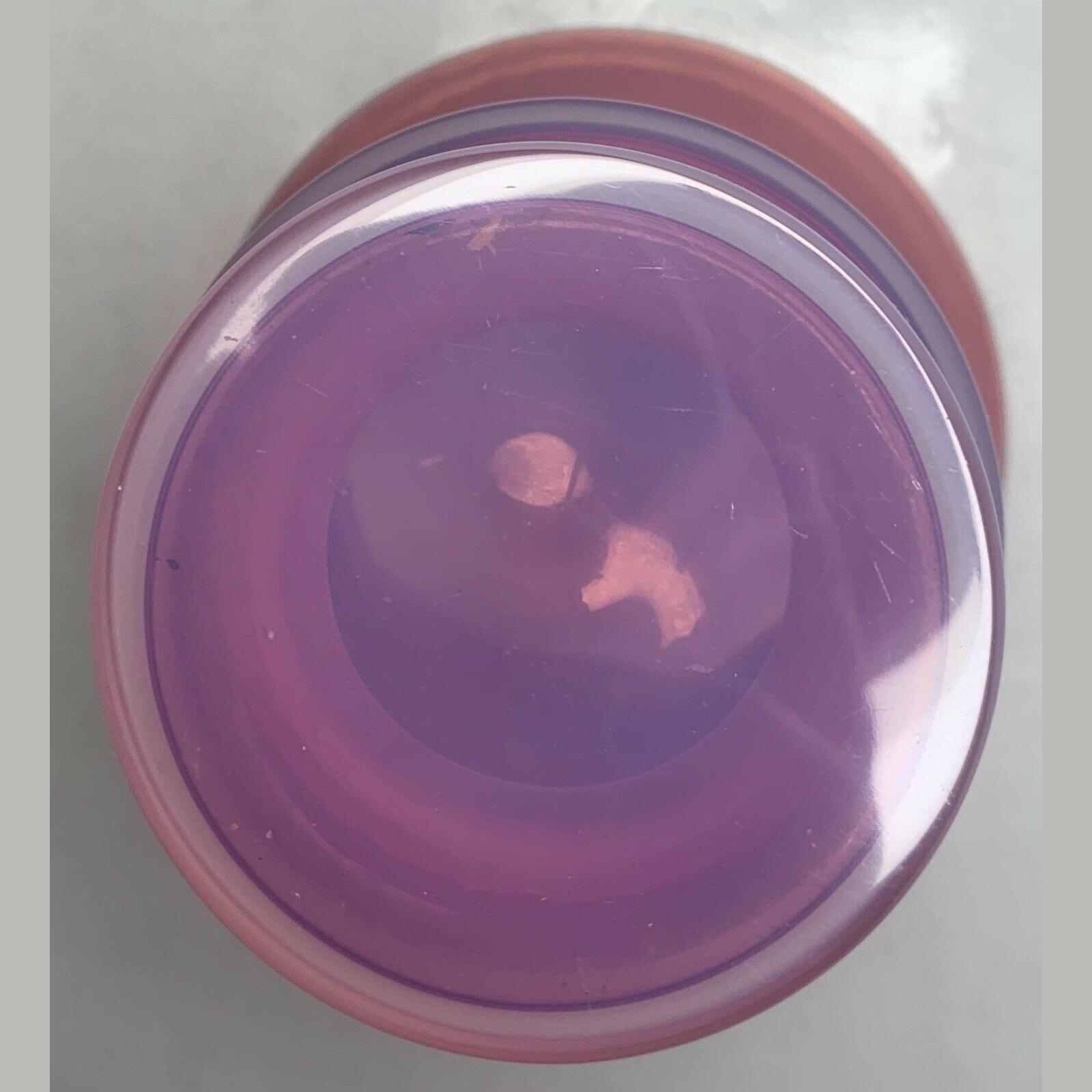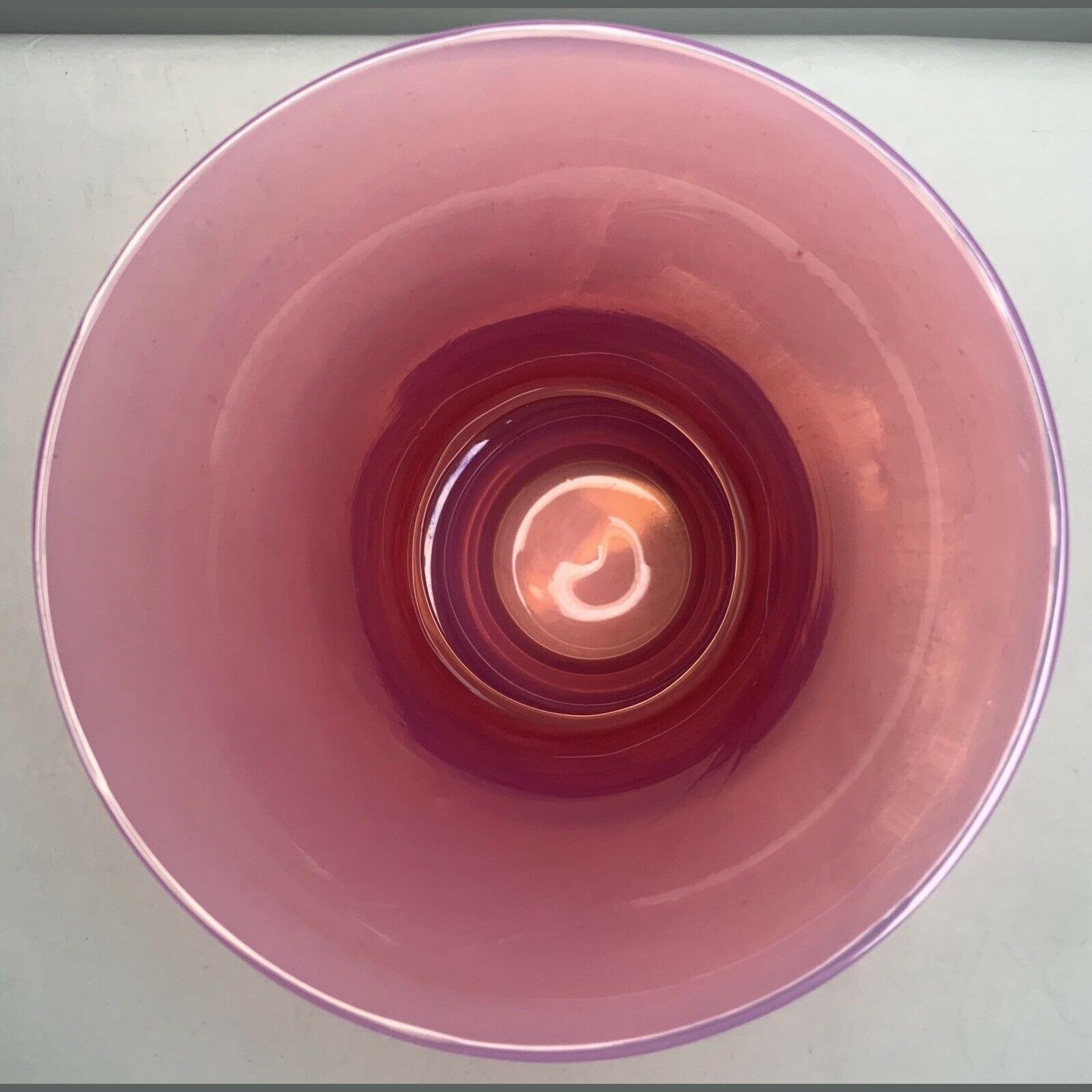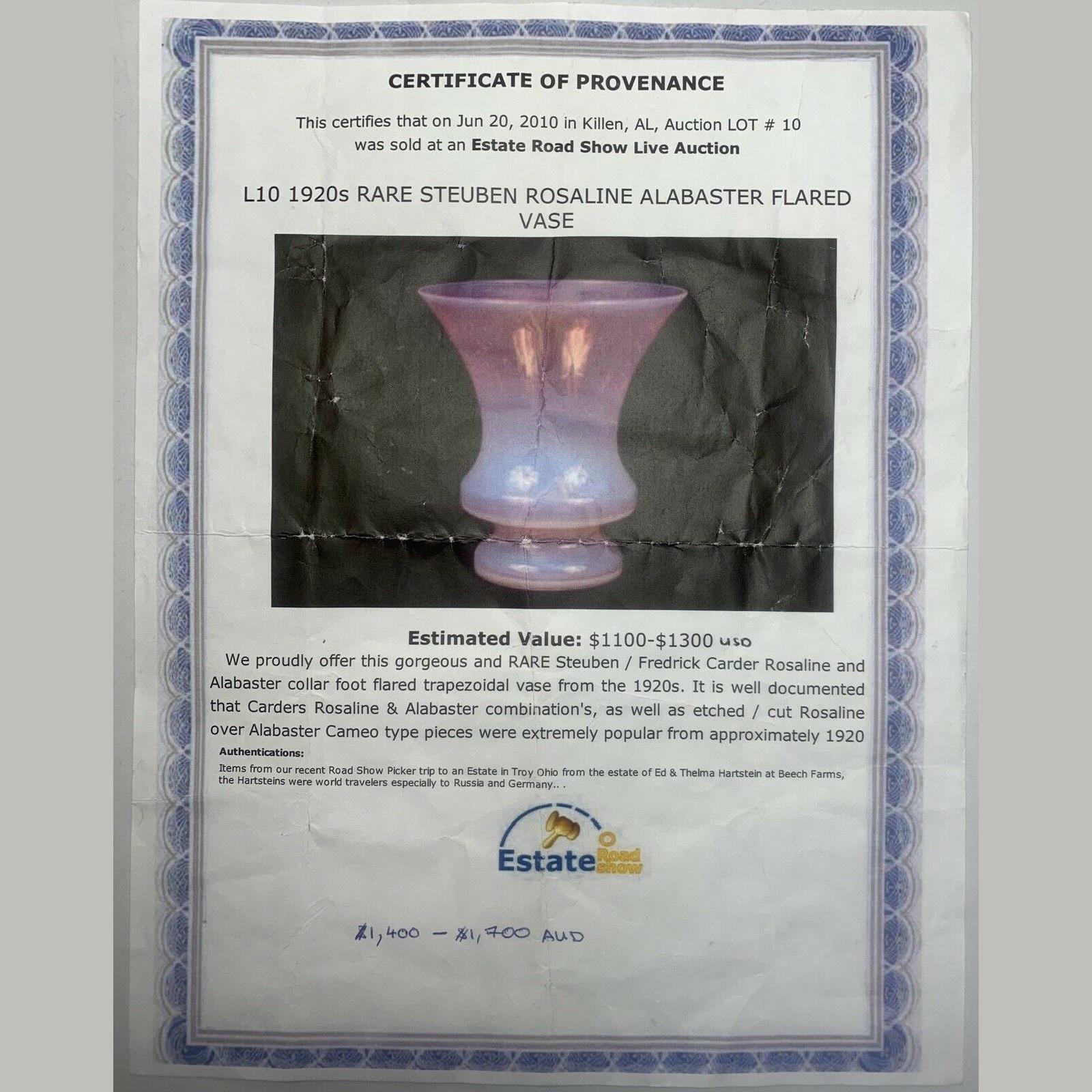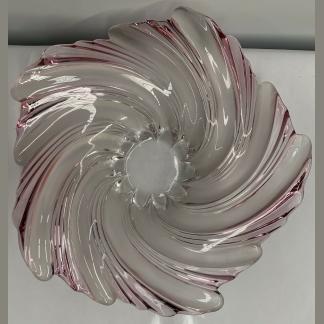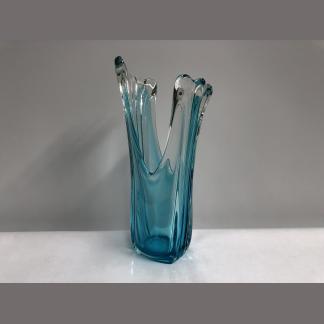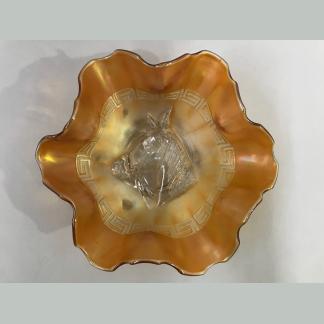Condition / Brief History:
Item has light wear from use due to age No Chips No Cracks in (Great condition) see photos as photos play an important role in description of condition will be posted in Cardboard and foam packaging
Most of the items we sell are of an antique or vintage era and reflect this in condition they are not in new condition unless stipulated we have a scale we use of (Excellent Condition): No visible flaws or wear – (Great Condition): May have very minor flaws and wear – (Good Condition): Does have flaws and wear in as found condition
Brief History:
Steuben Glass Works started operation in October 1903. Carder produced blanks for Hawkes and also began producing cut glass himself. Carder’s great love was colored glass and had been instrumental in the reintroduction of colored glass while at Stevens and Williams. When Steuben’s success at producing blanks for Hawkes became assured, Carder began to experiment with colored glass and continued experiments that were started in England. He soon perfected Gold Aurene which was similar to iridescent art glass that was being produced by Tiffany and others. Gold Aurene was followed by a wide range of colored art glass that eventually was produced in more than 7,000 shapes and 140 colors. These are a pair of handblown Steuben gold Aurene glass candlesticks designed by Frederick Carder for the Steuben Glass Works, ca. 1913. (From a private collection in Manhattan, New York.) Steuben Glass Works continued to produce glass of all sorts until World War I.
At that time war time restrictions made it impossible for Steuben to acquire the materials needed to continue manufacture. The company was subsequently sold to Corning Glass Works and became the Steuben Division. Carder continued as Division manager without any real change in the company’s operation except that he now had reporting responsibilities to Corning Glass Works’ management. Corning’s management tried, mostly unsuccessfully, to limit the articles that Steuben made to only the most popular. Production continued until about 1932. In 1932 there was a major change in Steuben management. The nationwide depression had limited the sale of Steuben and there was also a lessening of public interest in colored glass. In February 1932, John MacKay was appointed to Carder’s position and Carder became Art Director for Corning Glass Works. Steuben then produced primarily colorless art glass. Steuben still produced colored art glass mostly to fill special orders. A few new colors were added after Carder lost control of the company, but the last known sale for colored art glass by Steuben was in 1943.

